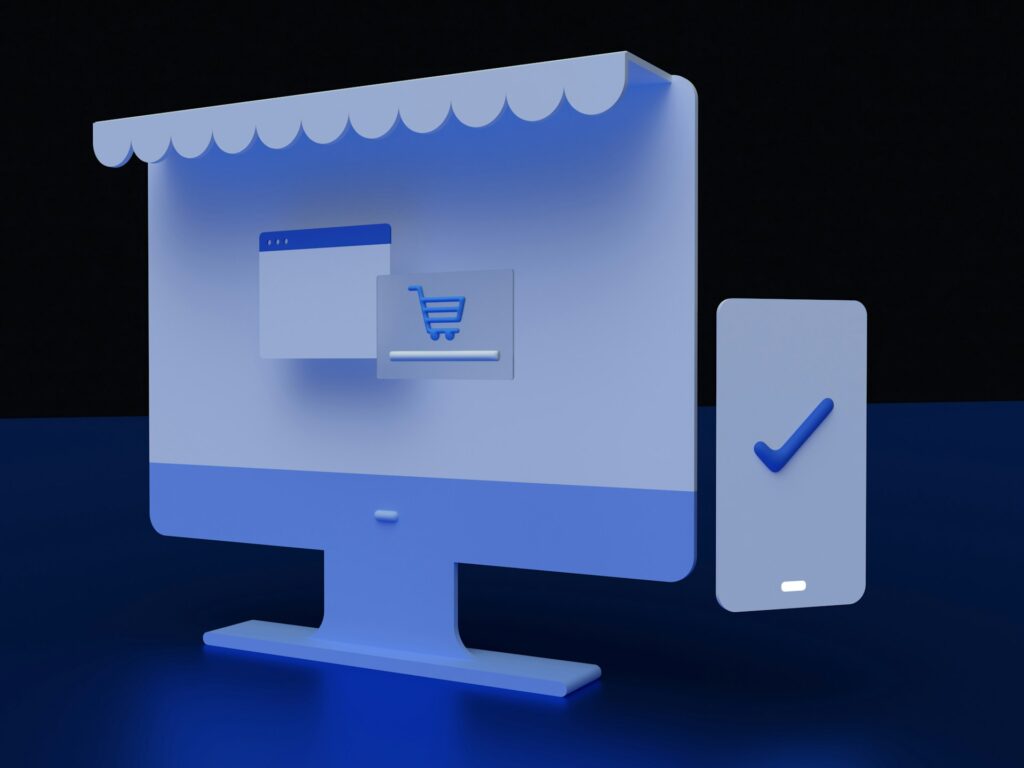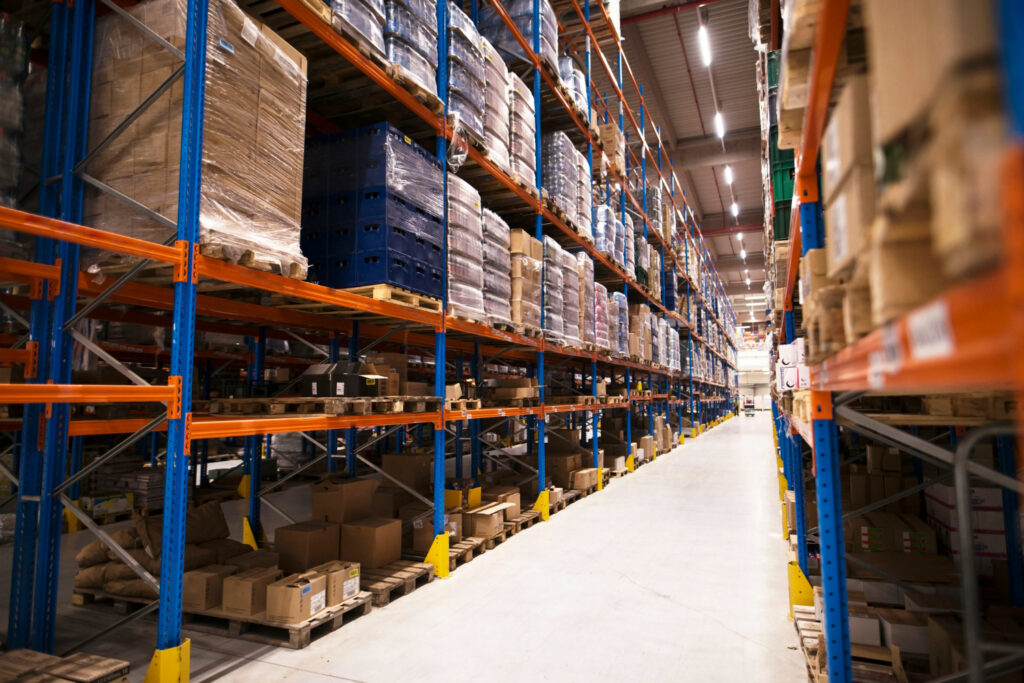- Blog
-
For Sellers
How to sell to Amazon directly via Amazon Vendor Central
Vendor Central lets you sell wholesale to Amazon, opening doors to new reach, big orders, and a different way of doing business.

Ever wondered what it would be like if Amazon became your customer instead of just your platform? That’s exactly what happens in the Amazon Vendor program.
Most Amazon merchants follow the traditional third-party seller route: creating storefronts and selling directly to customers. But there’s another path that flips the script entirely: becoming a first-party (1P) vendor where Amazon itself buys your products wholesale and resells them.
This invite-only arrangement comes with some serious perks. But getting that golden ticket isn’t straightforward, and the vendor relationship brings its own set of challenges.
Let’s dive into what selling directly to Amazon really means and if it might be right for your business.
Amazon seller vs. Amazon vendor: What’s the difference?
The best way to understand the differences between Sellers and Vendors on Amazon is to remember these two things:
- Amazon sellers make digital storefronts on the Amazon platform where their customers can browse and buy their products. Aside from “hosting” your store, Amazon itself plays little to no role in how you run your business.
- Amazon vendors sell their products to Amazon directly, which then sells them to customers at a profit.
Both of these models have some things in common (like following Amazon’s approved list of goods to sell), but there are some significant differences in how heavily Amazon is involved with Vendor merchants’ operations. That’s not to say that Vendors don’t have any freedom at all with how they operate their businesses, but they’ll have to comply with a different set of guidelines once they’re in the program.
What is the Amazon Vendor program?
The Amazon Vendor program is an invite-only program where the merchant acts as a supplier to Amazon, rather than a seller marketing to specific customers on the platform. Once you’re accepted into the Vendor program, your workflow will look somewhat like this:
- Amazon registers you as a 1P Vendor, which lets you access the Amazon Vendor Central portal
- Once you’re registered, Amazon sends your business Purchase Orders (POs), which you’ll have to fulfill and send to Amazon directly
- When Amazon receives your product, it will effectively take over the sales, marketing, and fulfillment of your products.
You’ll notice that the process is drastically simpler compared to other business models you can run on Amazon. You’ll automatically have access to other features not available to Seller partners.
How to become an Amazon Vendor
Given that the Amazon Vendor program is invite-only, how exactly do you get invited? While a complete set of requirements or guidelines hasn’t been released by Amazon, there are assumptions we can draw from how the Vendor program works.
Because Amazon will be the one buying your products via Purchase Orders and not actual customers, one of the expectations that Amazon will require from its Vendor partners is that their inventories are always well-stocked.
If your products are frequently marked as out of stock even if they’re experiencing high demand (a product performance statistic that Amazon can track), then you may be less likely to be invited to the Vendor program.
Aside from that, being an excellent Amazon Seller will always be a good foundation for building your reputation on Amazon, increasing your chances of being invited into the program. This includes responding to customer feedback, ensuring you comply with Amazon’s fulfillment requirements, and running your storefront well.
Is there a guaranteed way to become an Amazon 1P Vendor?
Unfortunately, simply being an outstanding Seller on Amazon isn’t enough to guarantee an invite to the Vendor program. While it’s true that outstanding sellers can be noticed by Amazon in terms of rankings, capturing the buy box, or overall Storefront visibility, the selection process doesn’t seem to be automated, though your Storefront statistics may play a role.
This is arguably the biggest drawback of any attempt to get into the Vendor program. You have no way of signing up for consideration, and the invitation requirements are vague at best. It’s very much an approach that relies on being high-performing for most (if not all) of your business lifespan on the Amazon platform. And even then, there’s no guarantee that you’ll get invited into the program.
This isn’t always a bad thing: keep in mind that being in the Amazon Vendor program has its considerations and restrictions, some of which may not work with the overall goals that you want from your business.
What are the considerations when becoming a first-party Amazon Vendor?
Becoming a 1P Amazon Vendor has its considerations that every entrepreneur should keep in mind before trying to qualify for the program. After all, you’ll be cooperating directly with Amazon, which means you’ll need to adapt your operations to theirs.
Here are two of the most significant considerations to keep in mind when you become an Amazon 1P Vendor:
Little to no control over your prices or listings
Since your orders will come from Amazon directly, you’ll have very little say in how much you’ll be pricing your products. This can lead to several immediate issues when it comes to profitability:
- Possibly lower profit margins overall, depending on your product demand
- Not being able to change your prices in response to market trends
- Minimum Advertised Price (MAP) policies can be broken at any time
Something that can further complicate this is Amazon’s control over your listings. This means that they can change your product descriptions and other information about your product without having to run it by you for approval. This can lead to some long-term complications, like:
- Audience confusion about the accuracy or consistency of your listings
- Frequent changes in your listings may affect inventory management
- Difficulty with inventory or product forecasting because of reliance on purchase orders
Overall, Amazon will have more control over your products, branding, and overall Storefront if you become part of its Vendor program. While this may work for those looking to establish a trusted business on Amazon, it may be less agreeable to merchants who want to create their brand on the platform.
Capability to meet Amazon’s purchase orders
Another significant factor to keep in mind with becoming an Amazon Vendor is that Amazon will expect you to keep your inventory stocked and always ready to ship. Fulfillment and inventory management are crucial to keeping your place in the Vendor program, as Amazon relies heavily on your capability to meet its demand.
This can be an issue if:
- Your inventory management isn’t optimized, or you run into issues with fulfillment to Amazon
- There are interruptions in your supply chain and overall sourcing process
- Internal processes for handling purchase orders don’t follow an organized workflow
If your business fails to meet Amazon’s expectations, you could be taken off the Vendor program—or be charged thousands in chargeback fees. These fees and other penalties can drastically take a toll on your business and its bottom line, making it unfeasible to continue being part of the Vendor program or keep pushing forward with considerable losses.
Benefits of the Amazon Vendor program
While the considerations discussed above can look like dealbreakers—and they can be, depending on your goals for your Amazon business—being part of the Amazon Vendor program does have some considerable perks.
Simplified purchases and profits
One of the benefits of being an Amazon Vendor is that you don’t have to worry about inventory forecasting anymore, only inventory management. Your demand won’t come from customers—rather, from Amazon’s Purchase Orders, which follow a consistent schedule.
Since Amazon will do most (if not all) forecasting for you, it becomes relatively simple for you to source your products, manage your inventory, and send them to Amazon when your POs arrive. While it does limit you to a wholesale model when it comes to sales, you’ll just have to focus on matters like billing or avoiding chargeback disputes.
Consolidated fee structure compared to sellers
Amazon Sellers will often need to do most of the work for their Storefronts. And while Amazon can help with these concerns via methods like their FBA program, these are often opt-in and can add numerous fees on top of all the other fees that they already need to pay. Vendors don’t need to go through all this, as they’re charged a flat amount by Amazon once they’re in the Vendor program.
Keep in mind that this doesn’t exclude you from other penalties or chargebacks, but you’ll find that the fees that you need to pay drastically simplify once you become a Vendor partner. Since Amazon already takes charge of so many processes that would normally be your responsibility as a Seller, all you need to do is pay for these services upfront and focus on inventory management and fulfillment.
Increased credibility as a brand
Arguably, the most significant benefit to becoming part of the Amazon Vendor program is that your products will appear with the “Ships From and Sold by Amazon” Prime badge. This increases customer trust in the quality and convenience of choosing your products, which can lead to increased profit margins overall.
The other support also offered by Amazon (like taking care of customer concerns and returns on your behalf) can boost your reputation compared to Amazon Sellers in your niche. This can further improve your good standing on the Amazon platform and among your audience, easily making you a preferred option for the goods and products that you sell.
Less time spent on product listings and optimization
Amazon takes control of product listing and optimization when you’re invited into the Vendor program. This reduces the time spent on creating product lists and trying to optimize your listings for the Buy Box, which is arguably one of the biggest time sinks that Amazon Sellers have to go through.
If your products have easy-to-list technical details, it’s even easier for you to simply focus on inventory management and product sourcing. All you need to do is ensure that Amazon gets your products, and they’ll do the rest.
No work is needed on marketing or advertising
The increased control that Amazon has over your product listings also means that your products have a better chance of showing up on Amazon’s algorithms. It’s difficult to say how optimized Amazon’s generated listings are compared to something that you’ll do yourself, but it’s a fair guess to say that, since you’re a Vendor partner, your products may be more likely to appear in search results.
When you add the fact that your products will have Amazon’s stamp of approval, you’ll find that you don’t have to do much in terms of marketing and advertising your business on Amazon. You can still consider other channels to promote your products, like social media, but as a Vendor, your products will most likely have increased visibility compared to Seller products.
Is it worth it to become an Amazon 1P Vendor?
Merchants may ask if it’s worth it to become an Amazon first-party vendor, given everything that’s been discussed in this article so far. Ultimately, the final answer will depend on their business goals and how they operate their businesses on Amazon.
Some questions you can ask yourself before trying to aim for the Amazon Vendor program include:
- Am I trying to simply grow a business for profit or start my brand online?
- How confident am I with my ability to manage inventory and source products?
- Can I guarantee that my performance as an Amazon Seller will be consistent enough to be considered for the Vendor program?
- Will my selected products be attractive enough to both Amazon and Amazon customers in the long term?
- What’s my strategy for growing my business if I do get into the Amazon Vendor program?
- Are there any considerations that may stop me from consistently performing according to Amazon’s expectations once I become a Vendor?
At the heart of it all, the one factor that you need to keep in mind is how much control you’re willing to give up on your business. Selling directly to Amazon instead of Amazon customers means that you’ll be more subject to Amazon’s own rules. But that also means that you’ll have to micromanage more areas of your business compared to Amazon, taking care of everything.
Improve your direct sales to Amazon
The path to becoming an Amazon Vendor starts with excelling as a seller. Building a track record of reliable inventory management, quality products, and strong performance metrics puts you on Amazon’s radar for potential vendor invitations.
For businesses eyeing the vendor program or already managing vendor relationships, having the right tools makes all the difference. Margin Pro specializes in helping vendors recover lost revenue and optimize their Amazon relationship. The platform automatically identifies chargebacks, shortages, price discrepancies, and other costly errors that frequently occur in vendor transactions.
With Margin Pro, you can recover 2-5% of your Amazon vendor revenue that would otherwise slip through the cracks. The system uses AI to audit your vendor account, document every claim with ironclad evidence, and recover your money in as little as four weeks—all with minimal effort on your part.
Ready to maximize your Amazon Vendor profitability? Get your free audit today and put lost revenue back where it belongs… in your business.






















